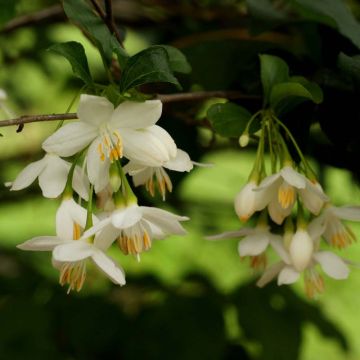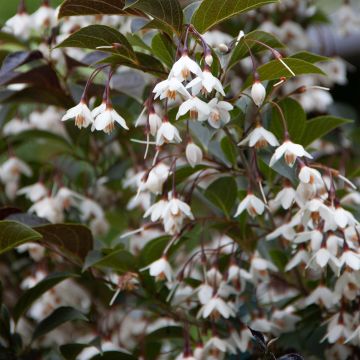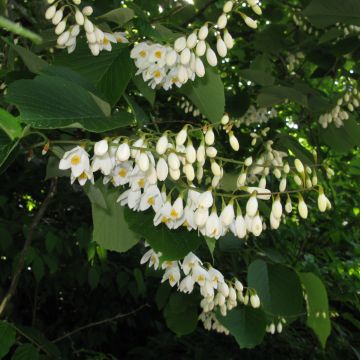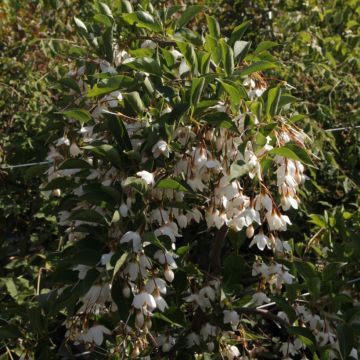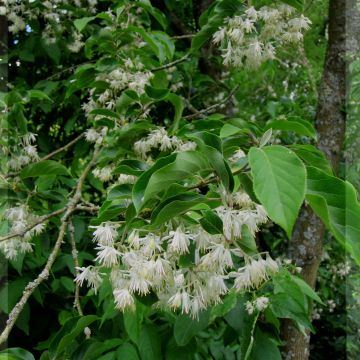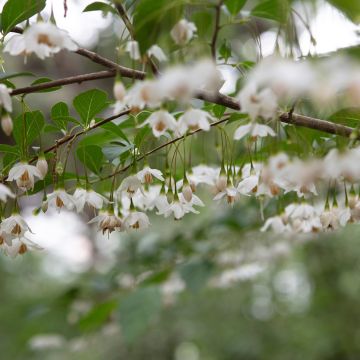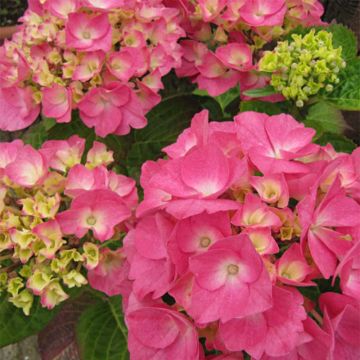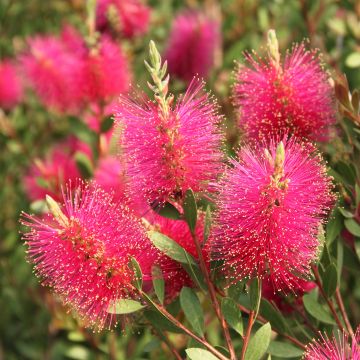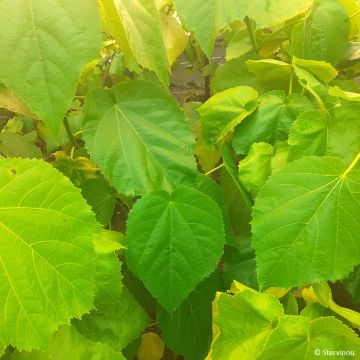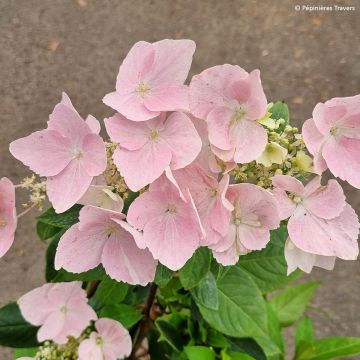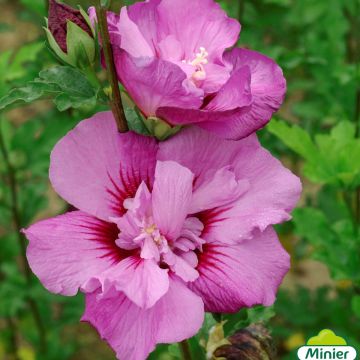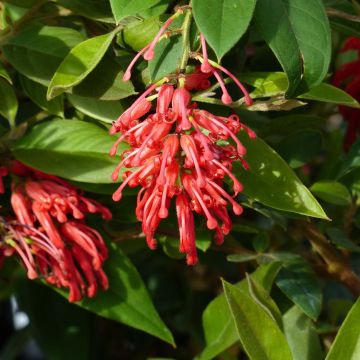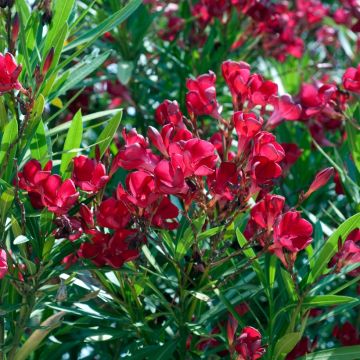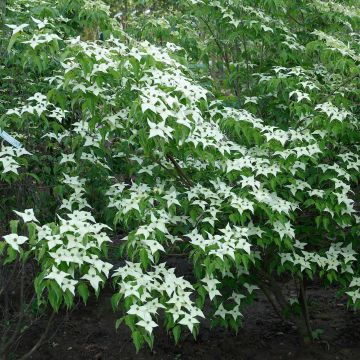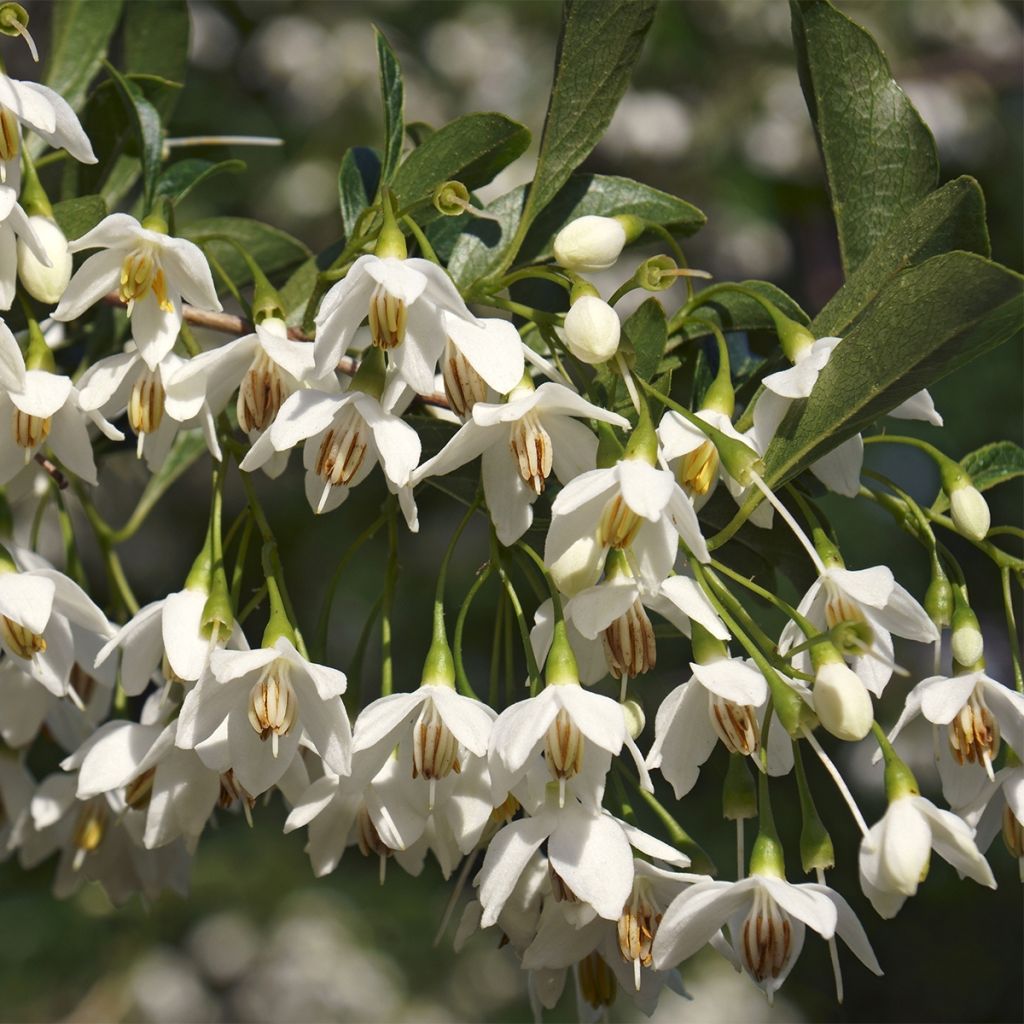

Styrax japonica Fargesii - Styrax japonais
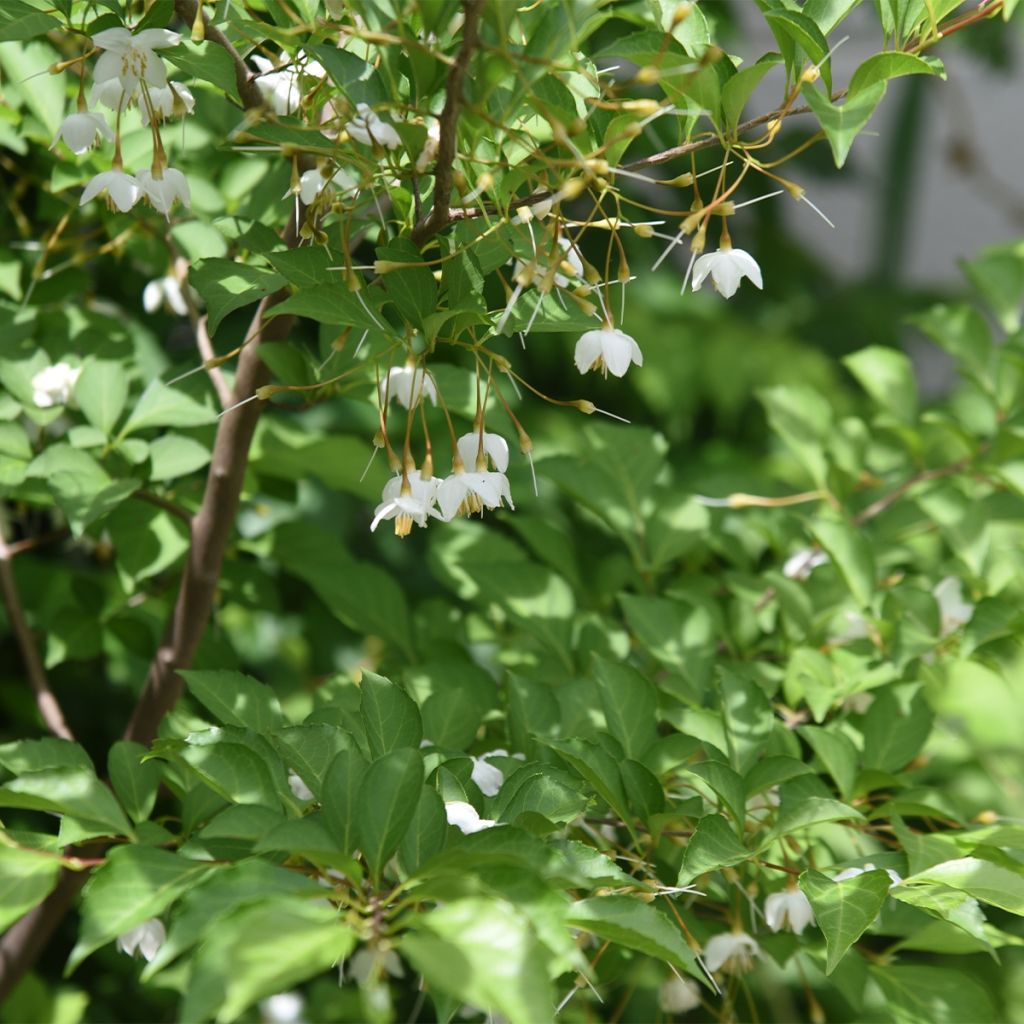

Styrax japonica Fargesii - Styrax japonais
Styrax japonicus Fargesii
Styrax japonica Fargesii
Japanese Snowbell
Very beautiful young plant, with many flower buds ready to bloom. Satisfied with the plant and thank you for packaging it so well for delivery. Expertly done, very few branches broken.
Caroline, 03/03/2022
Why not try an alternative variety in stock?
View all →This plant carries a 24 months recovery warranty
More information
We guarantee the quality of our plants for a full growing cycle, and will replace at our expense any plant that fails to recover under normal climatic and planting conditions.
From €5.90 for pickup delivery and €6.90 for home delivery
Express home delivery from €8.90.
Does this plant fit my garden?
Set up your Plantfit profile →
Description
Styrax japonicus 'Fargesii' distinguishes itself from the wild Japanese Styrax by its reduced growth, upright habit, larger leaves, and slightly later flowering. It is a deciduous bush full of charm, due to both its abundant fragrant summer flowering and its beautiful autumn colours. Its modest size and rather narrow habit make it a lovely subject for ornamenting small spaces and terraces. To admire it at leisure give it a prime location, preferably in the sun, in a cool and humus-rich soil.
Native to Japan, Korea, and China, Japanese Styrax is a deciduous bush of the Styracaceae family, composed of trees and aromatic resinous shrubs. It has given rise to cultivars and varieties with reduced growth, like 'Fargesii'.
Styrax japonicus var. Fargesii is a bush of modest size and rather slow growth. At maturity it will reach approximately 2.75 m (9ft) in height and 1.50 m (5ft) in width, sometimes 3.50 m (11ft) in height and 2 m (7ft) in spread under optimal conditions. Its habit is upright, rather narrow, supported by flexible branches of brown colour. The deciduous foliage, glossy, is composed of large ovate leaves with dentate margins. Their colour is a fairly dark, shiny green. Before falling they take on different shades of yellow to orange. In early summer, and occasionally until August, the branches are covered with numerous pure white buds resembling drops of snow, which open into small, highly fragrant flowers. These are white and bell-shaped, 1.5 cm (1in) in diameter, with 5 ovate lobes, adorned with a bouquet of golden stamens in the centre. They hang from a purple petiole, solitary or in clusters, below the branches. The bush offers a magnificent spectacle. The flowers, much visited by pollinating insects, give way to dry, olive-green ovoid fruits. This Styrax has excellent hardiness, around -20°C (1°F).
Japanese Styrax dreads scorching sunlight. It likes humus-rich, acidic, cool, and light soils, conditions that hydrangeas also enjoy. Place on its own, near a path or not far from the house, to fully enjoy its beauty and fragrance. It is also suitable for terraces or balconies, in a carefully chosen large pot. It can be combined with shrubs with dark or purple foliage - there are superb ones among the Physocarpus (All Black, Dart's Gold). The delicacy of the 'Fargesii' Styrax also goes wonderfully well with hydrangeas, wild camellias, and the simplicity of a fragrant raspberry Rubus odoratus, covered with pink summer flowers. Decorate its base with e.g. small variegated creeping euonymus shrubs (Emerald Gaiety) and Naples or coum cyclamens.
Report an error about the product description
Plant habit
Flowering
Foliage
Botanical data
Styrax
japonica
Fargesii
Styracaceae
Japanese Snowbell
Cultivar or hybrid
Other Styrax
Planting and care
Plant Styrax japonicus Fargesii in spring or autumn, in partial shade or in the sun, but avoiding the hottest sites in the garden. The sun promotes abundant flowering. It likes rather acidic, humus-rich, moist, rich and light soils, like hydrangeas, Pieris and camellias. Choose a location sheltered from the wind. Hardy down to -20°C (1°F), Styrax japonicus dislikes alkaline soils and a hot, dry climate.
Planting period
Intended location
Care
-
, onOrder confirmed
Reply from on Promesse de fleurs
Summer-flowering shrubs
Haven't found what you were looking for?
Hardiness is the lowest winter temperature a plant can endure without suffering serious damage or even dying. However, hardiness is affected by location (a sheltered area, such as a patio), protection (winter cover) and soil type (hardiness is improved by well-drained soil).

Photo Sharing Terms & Conditions
In order to encourage gardeners to interact and share their experiences, Promesse de fleurs offers various media enabling content to be uploaded onto its Site - in particular via the ‘Photo sharing’ module.
The User agrees to refrain from:
- Posting any content that is illegal, prejudicial, insulting, racist, inciteful to hatred, revisionist, contrary to public decency, that infringes on privacy or on the privacy rights of third parties, in particular the publicity rights of persons and goods, intellectual property rights, or the right to privacy.
- Submitting content on behalf of a third party;
- Impersonate the identity of a third party and/or publish any personal information about a third party;
In general, the User undertakes to refrain from any unethical behaviour.
All Content (in particular text, comments, files, images, photos, videos, creative works, etc.), which may be subject to property or intellectual property rights, image or other private rights, shall remain the property of the User, subject to the limited rights granted by the terms of the licence granted by Promesse de fleurs as stated below. Users are at liberty to publish or not to publish such Content on the Site, notably via the ‘Photo Sharing’ facility, and accept that this Content shall be made public and freely accessible, notably on the Internet.
Users further acknowledge, undertake to have ,and guarantee that they hold all necessary rights and permissions to publish such material on the Site, in particular with regard to the legislation in force pertaining to any privacy, property, intellectual property, image, or contractual rights, or rights of any other nature. By publishing such Content on the Site, Users acknowledge accepting full liability as publishers of the Content within the meaning of the law, and grant Promesse de fleurs, free of charge, an inclusive, worldwide licence for the said Content for the entire duration of its publication, including all reproduction, representation, up/downloading, displaying, performing, transmission, and storage rights.
Users also grant permission for their name to be linked to the Content and accept that this link may not always be made available.
By engaging in posting material, Users consent to their Content becoming automatically accessible on the Internet, in particular on other sites and/or blogs and/or web pages of the Promesse de fleurs site, including in particular social pages and the Promesse de fleurs catalogue.
Users may secure the removal of entrusted content free of charge by issuing a simple request via our contact form.
The flowering period indicated on our website applies to countries and regions located in USDA zone 8 (France, the United Kingdom, Ireland, the Netherlands, etc.)
It will vary according to where you live:
- In zones 9 to 10 (Italy, Spain, Greece, etc.), flowering will occur about 2 to 4 weeks earlier.
- In zones 6 to 7 (Germany, Poland, Slovenia, and lower mountainous regions), flowering will be delayed by 2 to 3 weeks.
- In zone 5 (Central Europe, Scandinavia), blooming will be delayed by 3 to 5 weeks.
In temperate climates, pruning of spring-flowering shrubs (forsythia, spireas, etc.) should be done just after flowering.
Pruning of summer-flowering shrubs (Indian Lilac, Perovskia, etc.) can be done in winter or spring.
In cold regions as well as with frost-sensitive plants, avoid pruning too early when severe frosts may still occur.
The planting period indicated on our website applies to countries and regions located in USDA zone 8 (France, United Kingdom, Ireland, Netherlands).
It will vary according to where you live:
- In Mediterranean zones (Marseille, Madrid, Milan, etc.), autumn and winter are the best planting periods.
- In continental zones (Strasbourg, Munich, Vienna, etc.), delay planting by 2 to 3 weeks in spring and bring it forward by 2 to 4 weeks in autumn.
- In mountainous regions (the Alps, Pyrenees, Carpathians, etc.), it is best to plant in late spring (May-June) or late summer (August-September).
The harvesting period indicated on our website applies to countries and regions in USDA zone 8 (France, England, Ireland, the Netherlands).
In colder areas (Scandinavia, Poland, Austria...) fruit and vegetable harvests are likely to be delayed by 3-4 weeks.
In warmer areas (Italy, Spain, Greece, etc.), harvesting will probably take place earlier, depending on weather conditions.
The sowing periods indicated on our website apply to countries and regions within USDA Zone 8 (France, UK, Ireland, Netherlands).
In colder areas (Scandinavia, Poland, Austria...), delay any outdoor sowing by 3-4 weeks, or sow under glass.
In warmer climes (Italy, Spain, Greece, etc.), bring outdoor sowing forward by a few weeks.

































